The Artilerryman’s Loop is a knot that creates a fixed loop in the middle of a rope. It’s usually used to create an attachment point (or many attachment points) along a rope.
It has other names as well, like the Artillery Loop, Harness Loop, or the Man-Harness Knot.
Quick Guide: Tying the Artilleryman’s Loop Knot
Create a loop in the rope (step 1) and move one end of the rope behind it. Take the right-most strand and move it behind the middle strand (step 2) and in front of the left strand (step 3). Keep pulling it until a new loop forms (step 4).
Before using the Artilleryman’s Loop, it’s important to tighten it securely by pulling on the loop and both ends of the rope. Otherwise, it can slip or loosen and turn into a running noose.
It shouldn’t be used in critical applications, like climbing. A much more secure knot to use for this purpose is the Alpine Butterfly Loop.
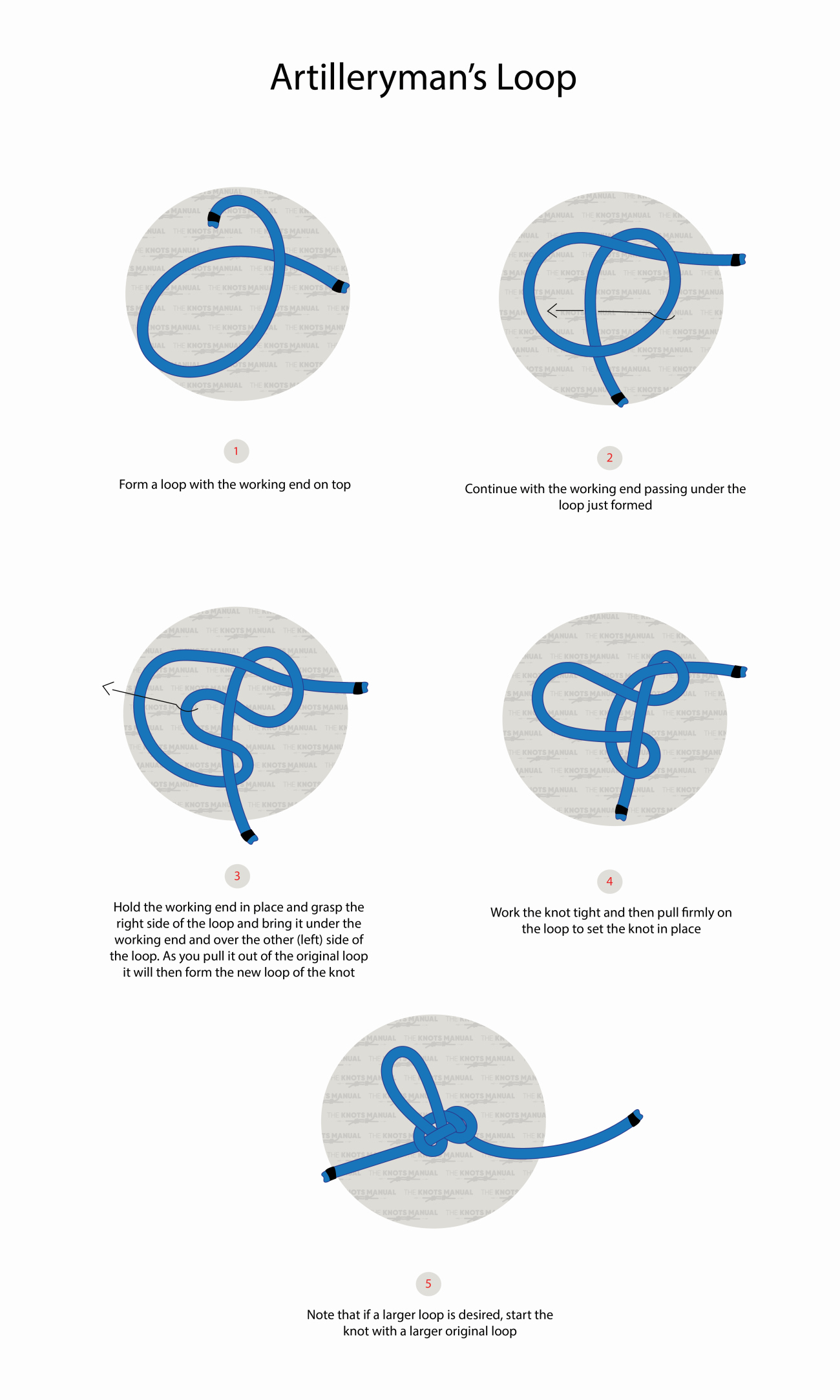
Pros and Cons of the Artilleryman’s Loop
The main advantage of the Artilleryman’s Loop is that is it very quick and easy to tie. With practice, you can tie it in a few seconds. This makes it ideal to use for everyday situations where you quickly need to create an attachment point to a rope.
Another benefit is that it doesn’t require both ends of the rope to be free. You can tie it in the middle of the rope even if both ends are attached to something.
The Artilleryman’s Loop won’t slip if it’s properly tightened and it isn’t attached to a too-heavy load. You can also keep the loop empty if you aren’t pulling the rope too hard, and it won’t untie by itself.
Common Uses for the Artilleryman’s Loop
The Artilleryman’s Loop was historically used to haul heavy artillery on the battlefield. Today, it’s used in various non-critical situations, for example when moving animals, tensioning rope, car towing, and similar applications. You can create extra anchor points within the rope to adjust its tension, create an attachment point, or pull it from one side.
Knots Like the Artilleryman’s Loop
Alpine Butterly Loop: Creates a secure loop in the middle of a rope. It’s tied easily and it’s much more secure than the Artilleryman’s Loop. It’s so secure, that it’s commonly used to isolate a piece of damaged rope by tying it in a way where it sits within the loop.
Dropper Loop: A fishing knot that creates a loop in the middle of a rope. It’s considered to be very secure, but takes longer to tie and is also more bulky.
Directional Figure 8 Loop: A quick way to create an attachment point within a rope. It’s a secure knot, but it can only be loaded from one direction.
Farmer’s Loop: Another easy midline loop. It’s more secure than the Artilleryman’s Loop, but not as reliable as the Alpine Butterfly Bend. It’s also very commonly used in climbing.
Bowline on a Bight: Creates two loops in the middle of a rope without requiring either of the ends to be free. This knot is commonly used in search and rescue because it’s secure and the loops won’t untie if they’re empty.
Double Alpine Butterfly Loop: Tied identically to the Alpine Butterfly Loop, except with one more turn. Because of this, it creates two secure loops in the middle of a rope instead of one.
Step-By-Step Guide: How to Tie an Artilleryman’s Loop Knot
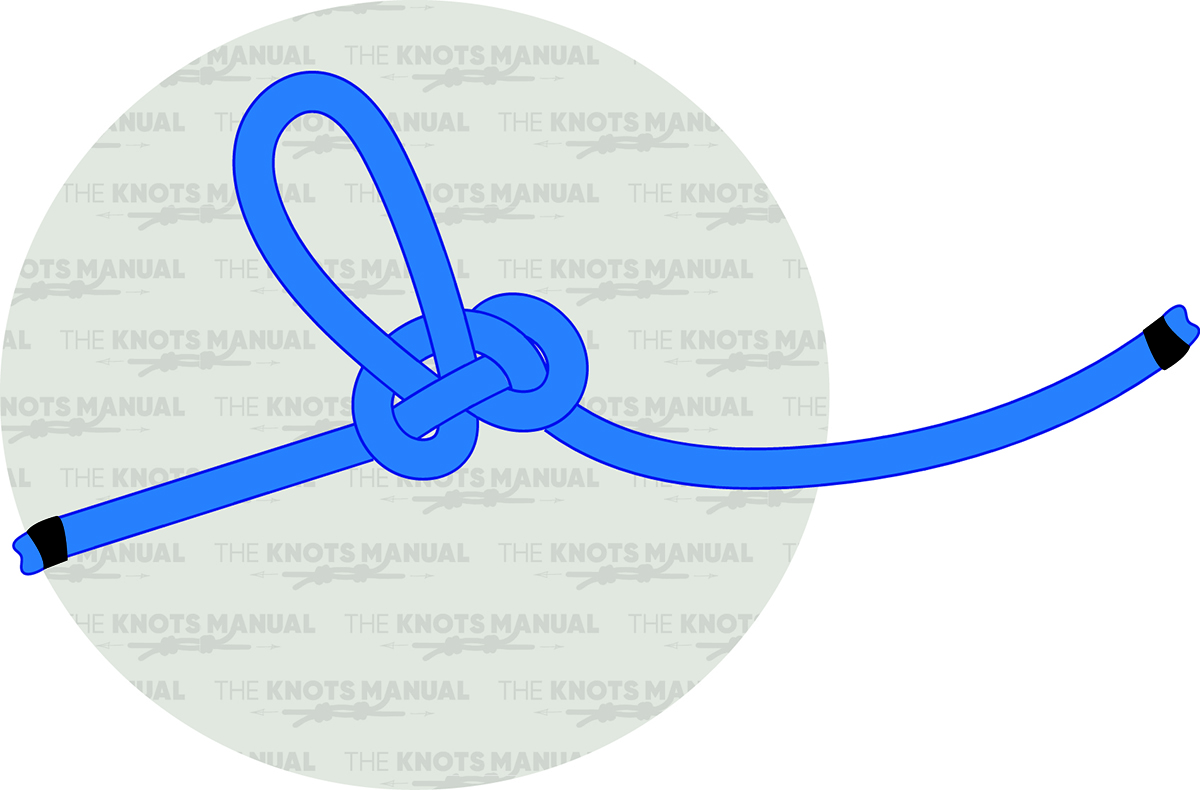
A step-by-step guide on how to tie an Artilleryman’s Loop Knot.
Step 1:
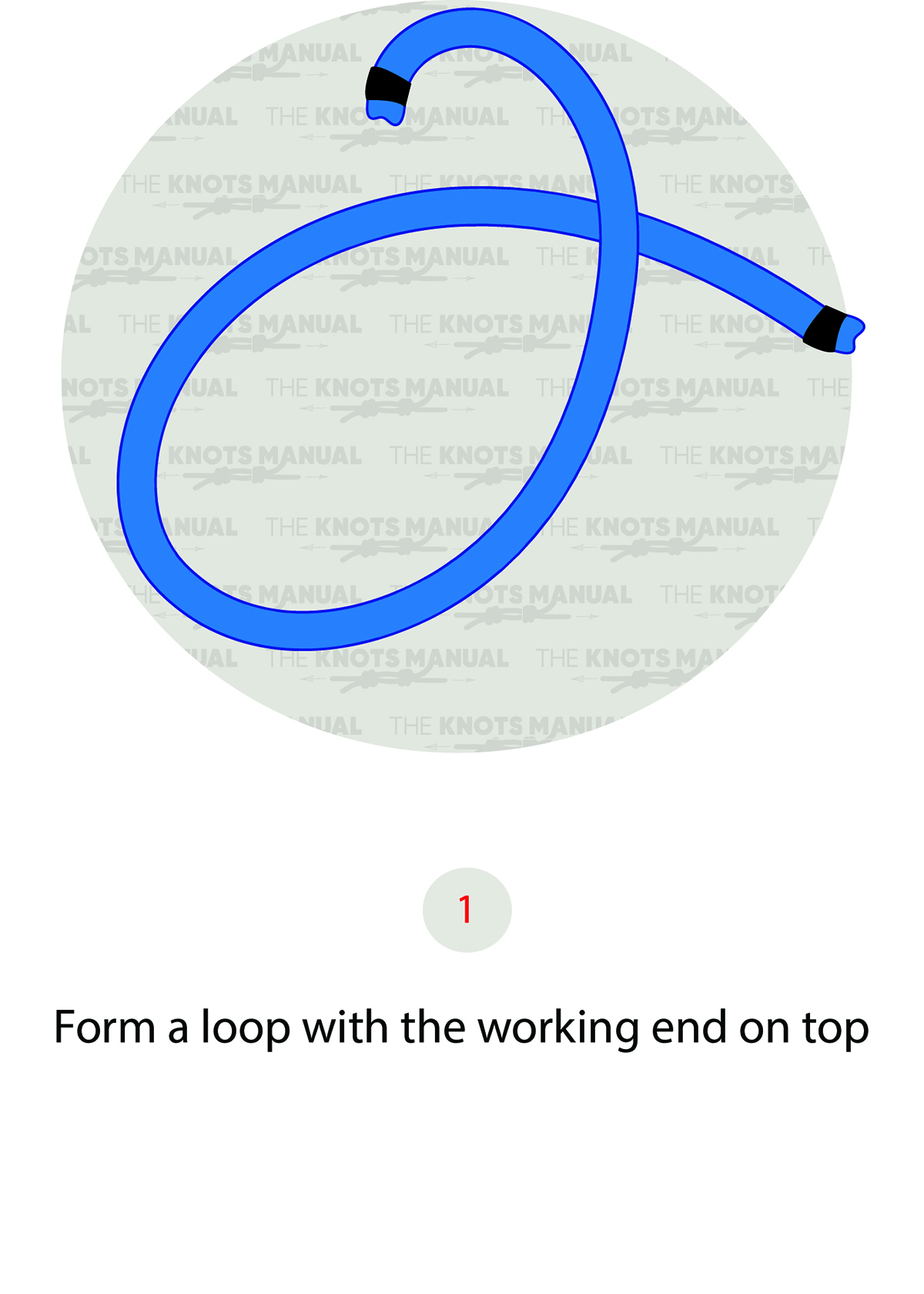
Pass the working end over the standing end, forming a loop.
Step 2:
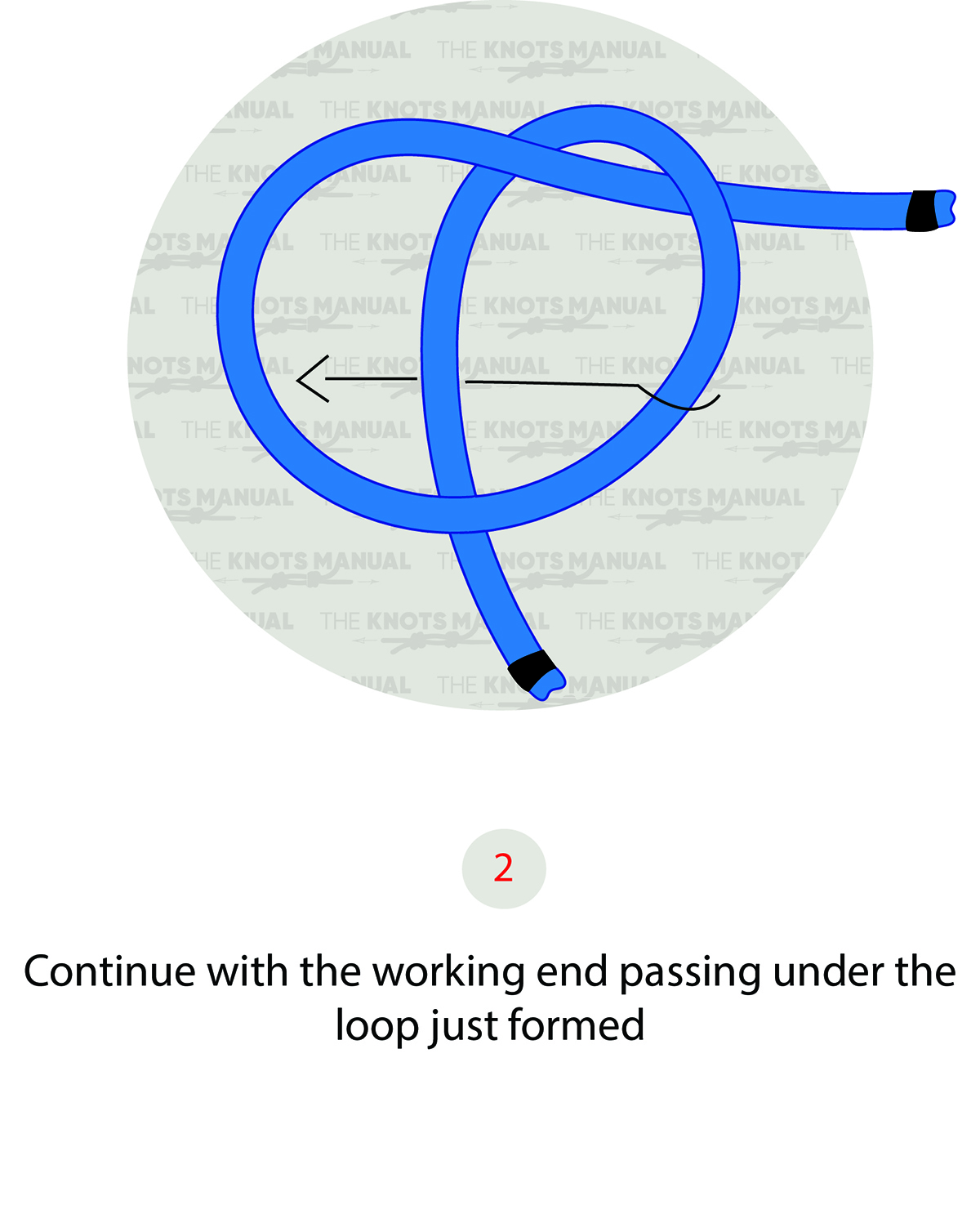
Pass the working end behind this loop. Then take the right-most strand in this loop and pull it behind the middle strand.
Step 3:
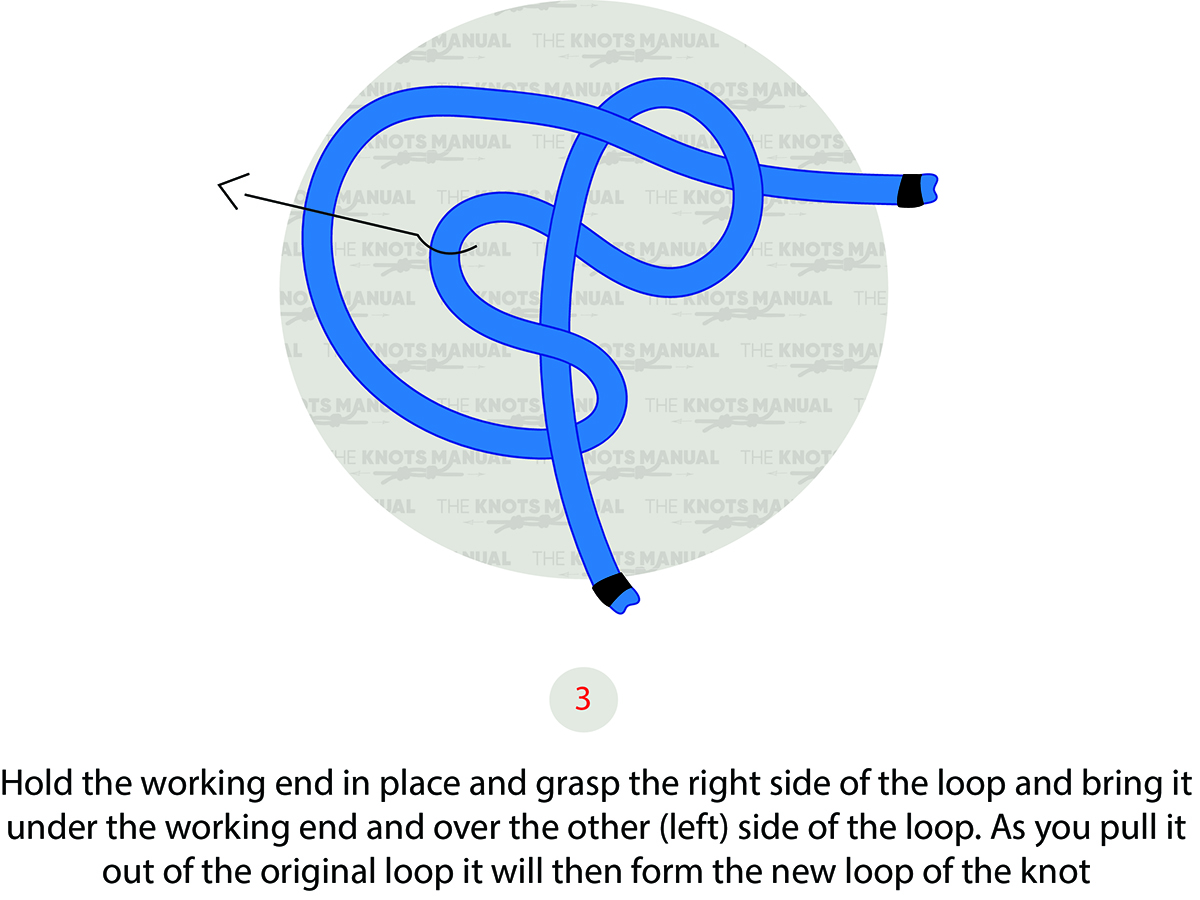
Continue passing the right-most loop in front of the left-most loop.
Step 4:
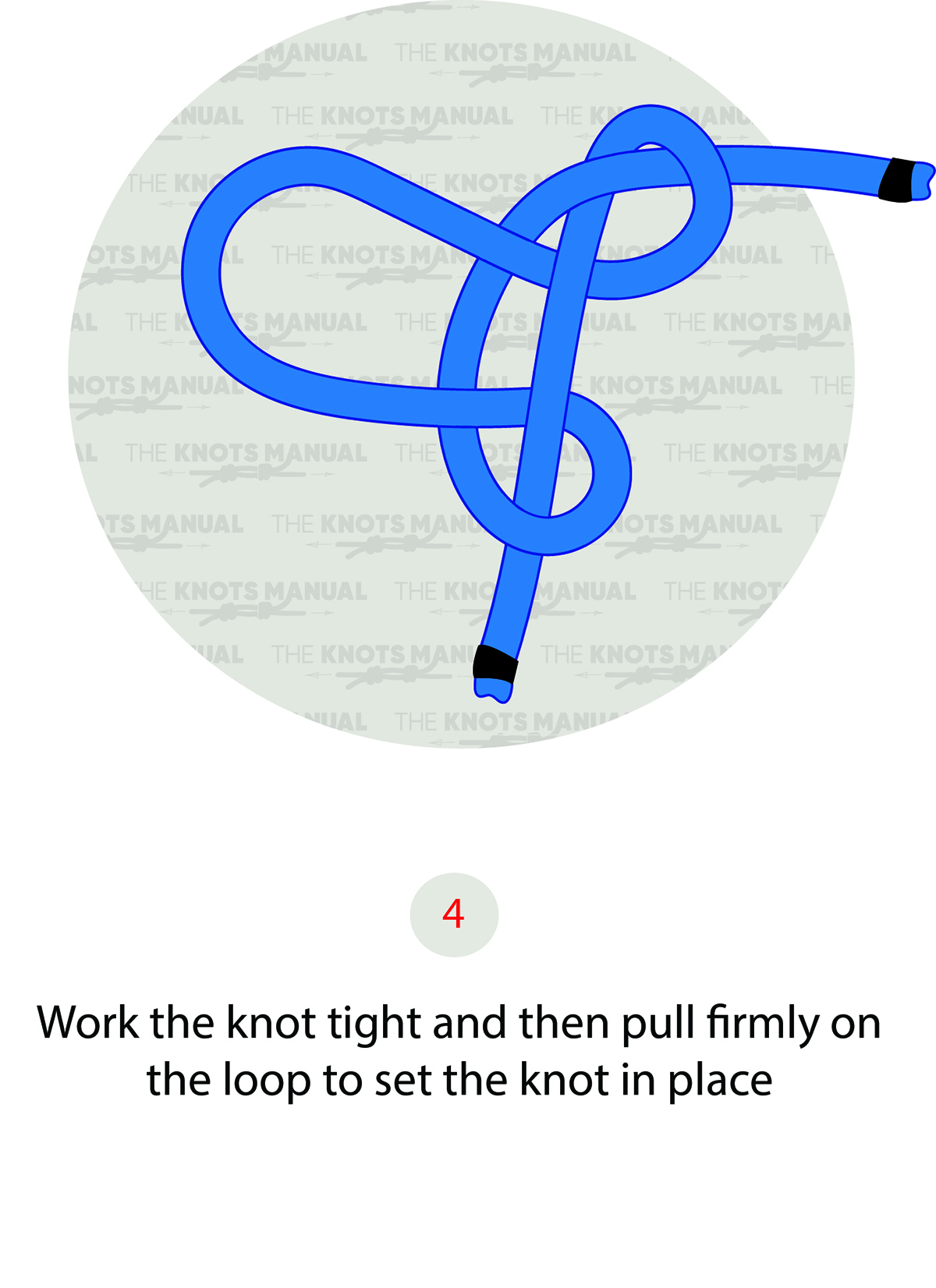
Continue pulling the loop until the rest of the knot becomes tight (and looks identical to as illustrated above).
Step 5:
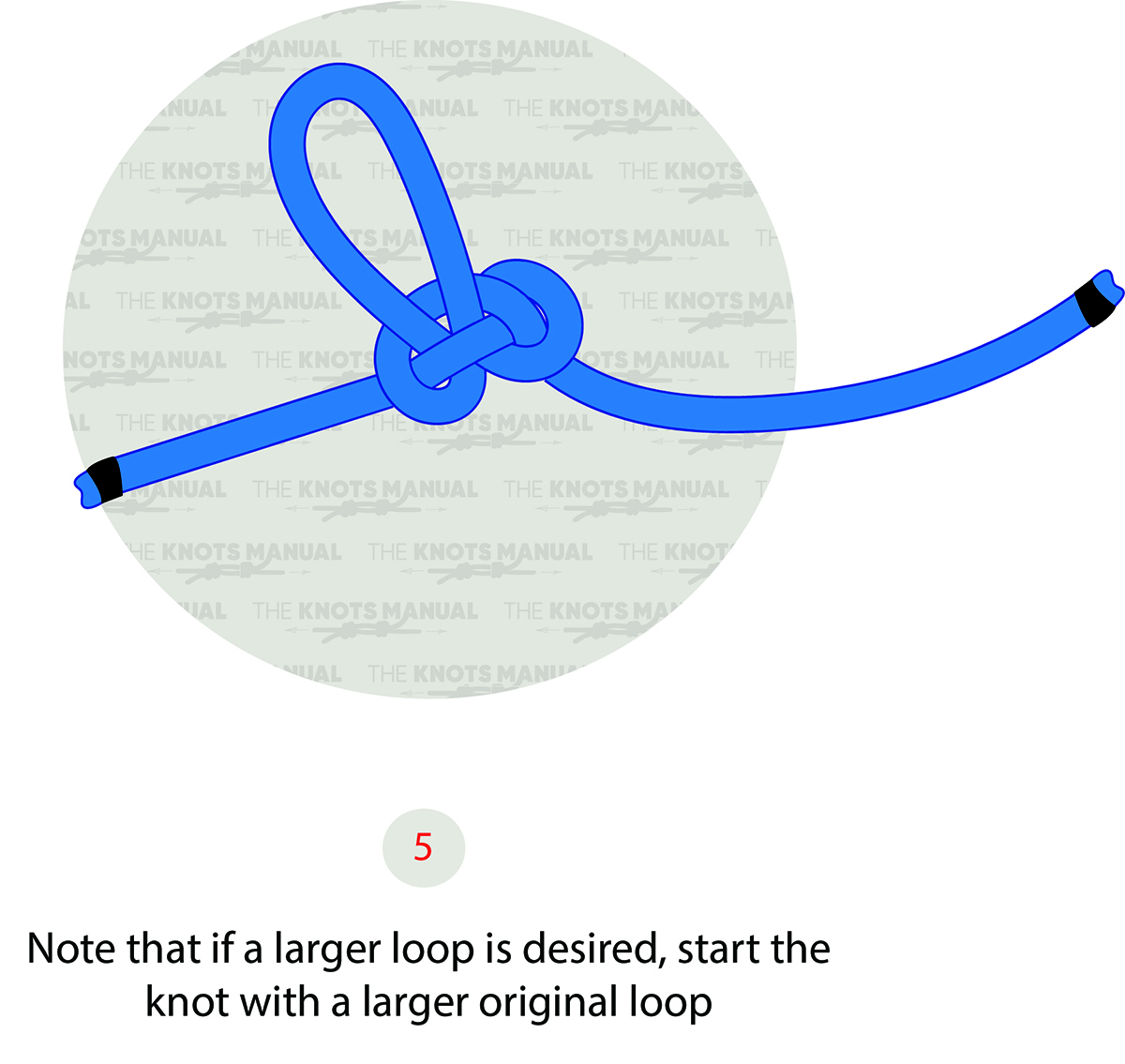
Tighten and dress the knot before using it.
